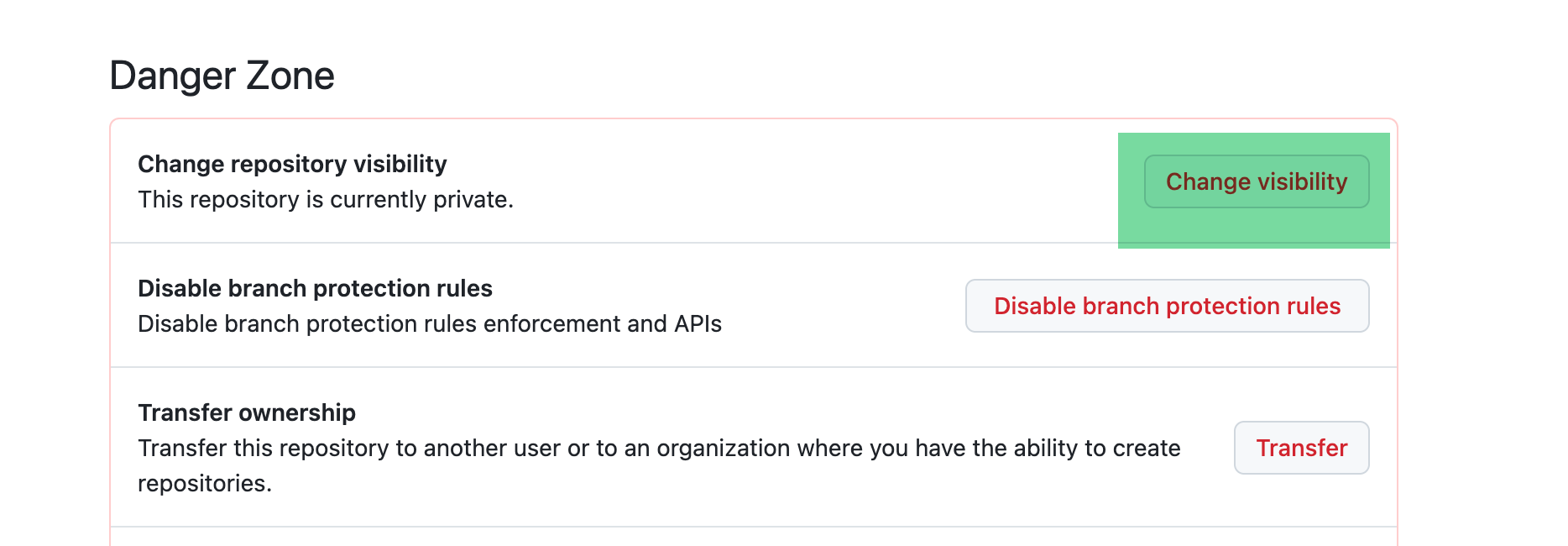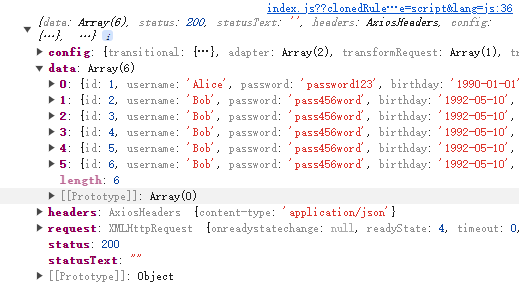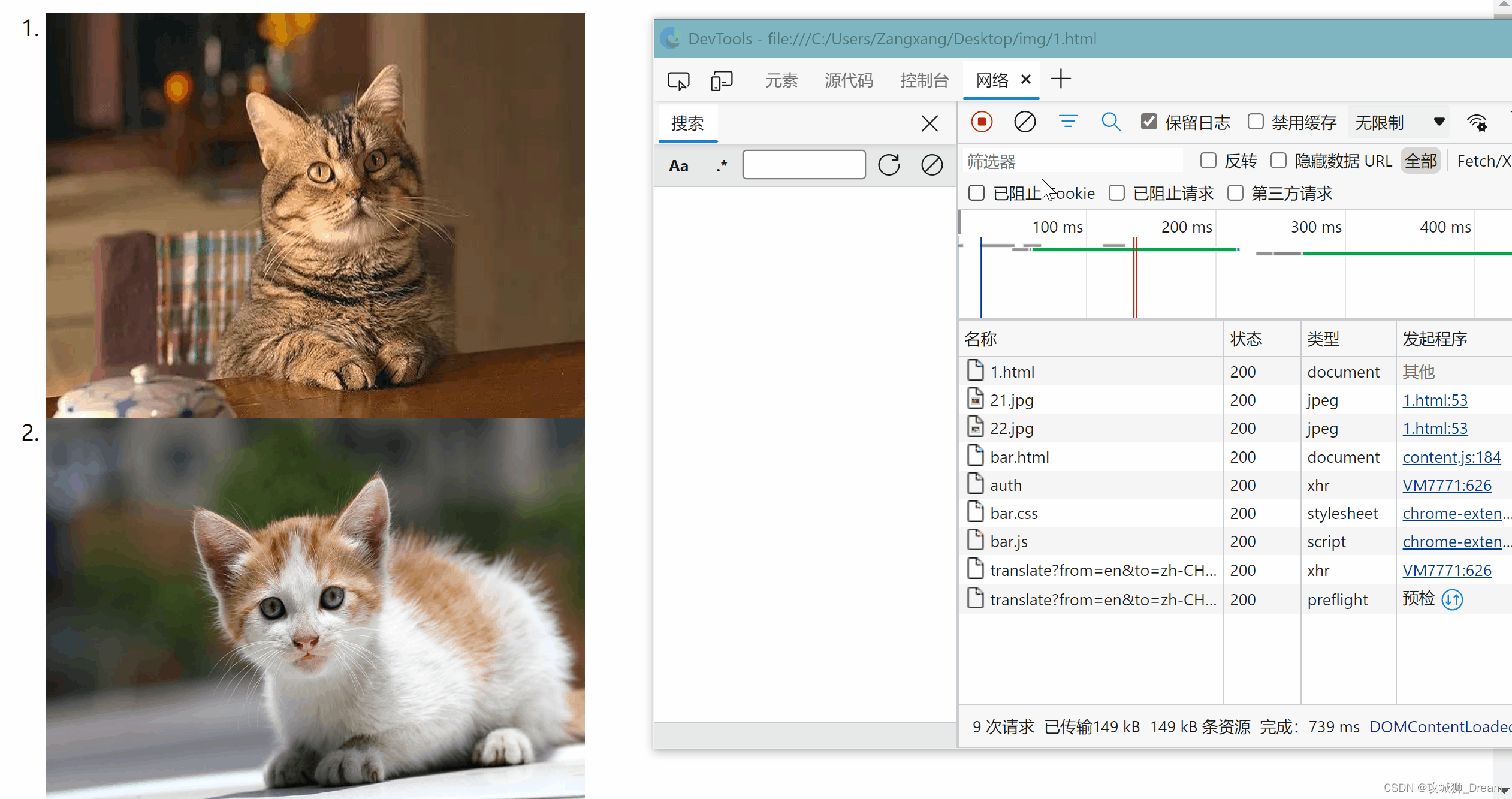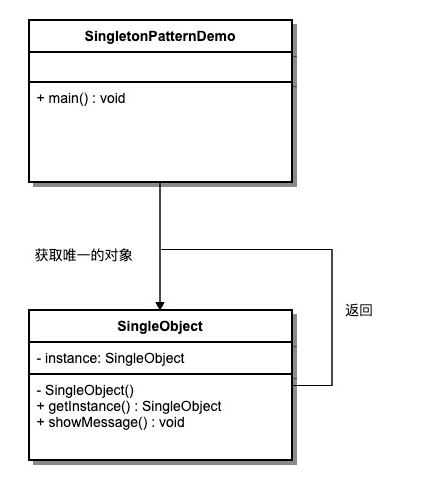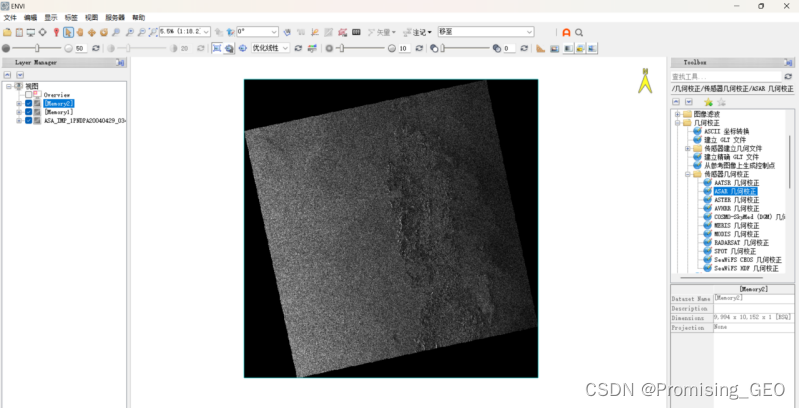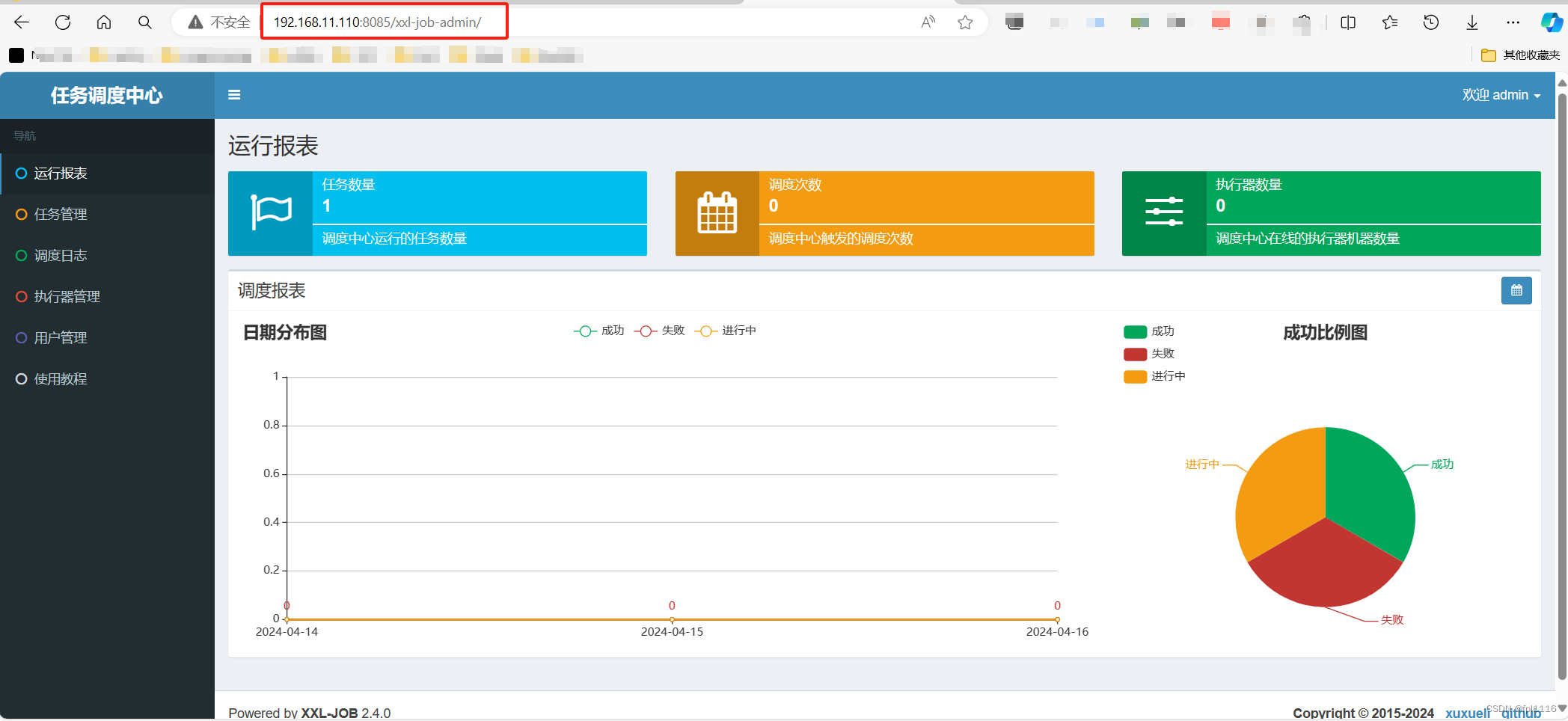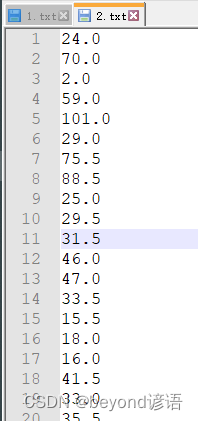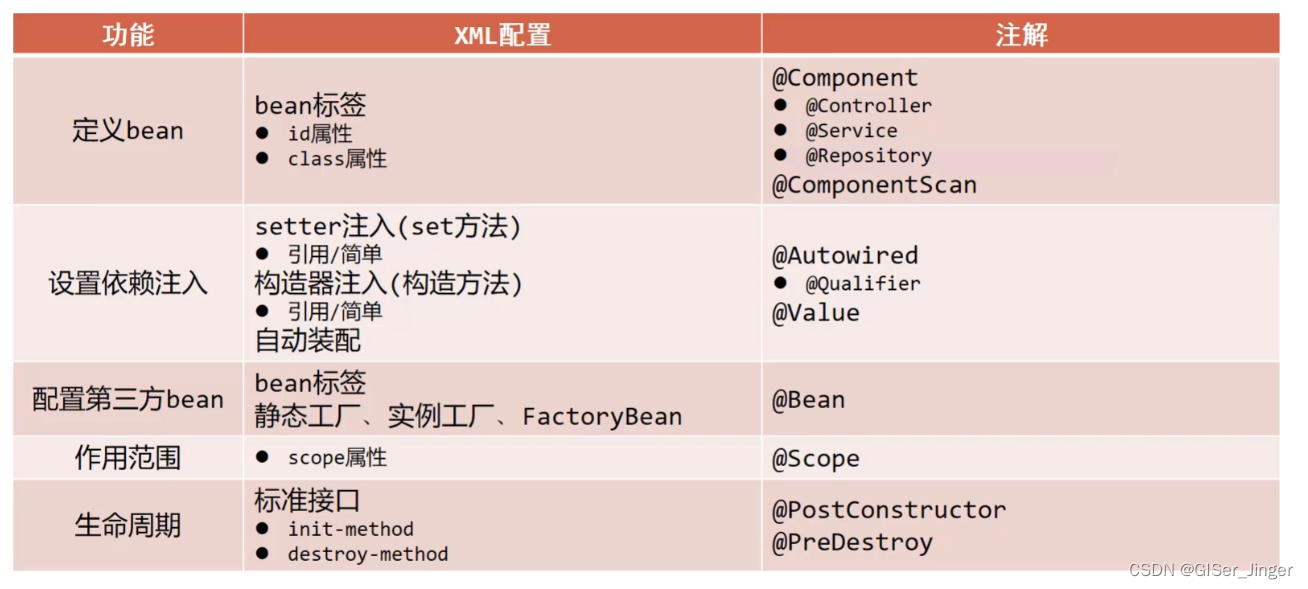本文首发于公众号:机器感知
LoopAnimate、LLM-Seg、DreamScape、LoopGaussian、TransformerFAM

Lossless Acceleration of Large Language Model via Adaptive N-gram Parallel Decoding

While Large Language Models (LLMs) have shown remarkable abilities, they are hindered by significant resource consumption and considerable latency due to autoregressive processing. In this study, we introduce Adaptive N-gram Parallel Decoding (ANPD), an innovative and lossless approach that accelerates inference by allowing the simultaneous generation of multiple tokens. ANPD incorporates a two-stage approach: it begins with a rapid drafting phase that employs an N-gram module, which adapts based on the current interactive context, followed by a verification phase, during which the original LLM assesses and confirms the proposed tokens. Consequently, ANPD preserves the integrity of the LLM's original output while enhancing processing speed. We further leverage a multi-level architecture for the N-gram module to enhance the precision of the initial draft, consequently reducing inference latency. ANPD eliminates the need for retraining or extra GPU memory, making it an efficien......
LLM-Seg: Bridging Image Segmentation and Large Language Model Reasoning

Understanding human instructions to identify the target objects is vital for perception systems. In recent years, the advancements of Large Language Models (LLMs) have introduced new possibilities for image segmentation. In this work, we delve into reasoning segmentation, a novel task that enables segmentation system to reason and interpret implicit user intention via large language model reasoning and then segment the corresponding target. Our work on reasoning segmentation contributes on both the methodological design and dataset labeling. For the model, we propose a new framework named LLM-Seg. LLM-Seg effectively connects the current foundational Segmentation Anything Model and the LLM by mask proposals selection. For the dataset, we propose an automatic data generation pipeline and construct a new reasoning segmentation dataset named LLM-Seg40K. Experiments demonstrate that our LLM-Seg exhibits competitive performance compared with existing methods. Furthermore, our prop......
Megalodon: Efficient LLM Pretraining and Inference with Unlimited Context Length

The quadratic complexity and weak length extrapolation of Transformers limits their ability to scale to long sequences, and while sub-quadratic solutions like linear attention and state space models exist, they empirically underperform Transformers in pretraining efficiency and downstream task accuracy. We introduce Megalodon, a neural architecture for efficient sequence modeling with unlimited context length. Megalodon inherits the architecture of Mega (exponential moving average with gated attention), and further introduces multiple technical components to improve its capability and stability, including complex exponential moving average (CEMA), timestep normalization layer, normalized attention mechanism and pre-norm with two-hop residual configuration. In a controlled head-to-head comparison with Llama2, Megalodon achieves better efficiency than Transformer in the scale of 7 billion parameters and 2 trillion training tokens. Megalodon reaches a training loss of 1.70, land......
DeDoDe v2: Analyzing and Improving the DeDoDe Keypoint Detector

In this paper, we analyze and improve into the recently proposed DeDoDe keypoint detector. We focus our analysis on some key issues. First, we find that DeDoDe keypoints tend to cluster together, which we fix by performing non-max suppression on the target distribution of the detector during training. Second, we address issues related to data augmentation. In particular, the DeDoDe detector is sensitive to large rotations. We fix this by including 90-degree rotations as well as horizontal flips. Finally, the decoupled nature of the DeDoDe detector makes evaluation of downstream usefulness problematic. We fix this by matching the keypoints with a pretrained dense matcher (RoMa) and evaluating two-view pose estimates. We find that the original long training is detrimental to performance, and therefore propose a much shorter training schedule. We integrate all these improvements into our proposed detector DeDoDe v2 and evaluate it with the original DeDoDe descriptor on the MegaD......
Enforcing Paraphrase Generation via Controllable Latent Diffusion

Paraphrase generation aims to produce high-quality and diverse utterances of a given text. Though state-of-the-art generation via the diffusion model reconciles generation quality and diversity, textual diffusion suffers from a truncation issue that hinders efficiency and quality control. In this work, we propose \textit{L}atent \textit{D}iffusion \textit{P}araphraser~(LDP), a novel paraphrase generation by modeling a controllable diffusion process given a learned latent space. LDP achieves superior generation efficiency compared to its diffusion counterparts. It facilitates only input segments to enforce paraphrase semantics, which further improves the results without external features. Experiments show that LDP achieves improved and diverse paraphrase generation compared to baselines. Further analysis shows that our method is also helpful to other similar text generations and domain adaptations. Our code and data are available at https://github.com/NIL-zhuang/ld4pg. ......
LoopGaussian: Creating 3D Cinemagraph with Multi-view Images via Eulerian Motion Field

Cinemagraph is a unique form of visual media that combines elements of still photography and subtle motion to create a captivating experience. However, the majority of videos generated by recent works lack depth information and are confined to the constraints of 2D image space. In this paper, inspired by significant progress in the field of novel view synthesis (NVS) achieved by 3D Gaussian Splatting (3D-GS), we propose LoopGaussian to elevate cinemagraph from 2D image space to 3D space using 3D Gaussian modeling. To achieve this, we first employ the 3D-GS method to reconstruct 3D Gaussian point clouds from multi-view images of static scenes,incorporating shape regularization terms to prevent blurring or artifacts caused by object deformation. We then adopt an autoencoder tailored for 3D Gaussian to project it into feature space. To maintain the local continuity of the scene, we devise SuperGaussian for clustering based on the acquired features. By calculating the similarity ......
LoopAnimate: Loopable Salient Object Animation

Research on diffusion model-based video generation has advanced rapidly. However, limitations in object fidelity and generation length hinder its practical applications. Additionally, specific domains like animated wallpapers require seamless looping, where the first and last frames of the video match seamlessly. To address these challenges, this paper proposes LoopAnimate, a novel method for generating videos with consistent start and end frames. To enhance object fidelity, we introduce a framework that decouples multi-level image appearance and textual semantic information. Building upon an image-to-image diffusion model, our approach incorporates both pixel-level and feature-level information from the input image, injecting image appearance and textual semantic embeddings at different positions of the diffusion model. Existing UNet-based video generation models require to input the entire videos during training to encode temporal and positional information at once. However......
TransformerFAM: Feedback attention is working memory

While Transformers have revolutionized deep learning, their quadratic attention complexity hinders their ability to process infinitely long inputs. We propose Feedback Attention Memory (FAM), a novel Transformer architecture that leverages a feedback loop to enable the network to attend to its own latent representations. This design fosters the emergence of working memory within the Transformer, allowing it to process indefinitely long sequences. TransformerFAM requires no additional weights, enabling seamless integration with pre-trained models. Our experiments show that TransformerFAM significantly improves Transformer performance on long-context tasks across various model sizes (1B, 8B, and 24B). These results showcase the potential to empower Large Language Models (LLMs) to process sequences of unlimited length. ......
DreamScape: 3D Scene Creation via Gaussian Splatting joint Correlation Modeling

Recent progress in text-to-3D creation has been propelled by integrating the potent prior of Diffusion Models from text-to-image generation into the 3D domain. Nevertheless, generating 3D scenes characterized by multiple instances and intricate arrangements remains challenging. In this study, we present DreamScape, a method for creating highly consistent 3D scenes solely from textual descriptions, leveraging the strong 3D representation capabilities of Gaussian Splatting and the complex arrangement abilities of large language models (LLMs). Our approach involves a 3D Gaussian Guide ($3{DG^2}$) for scene representation, consisting of semantic primitives (objects) and their spatial transformations and relationships derived directly from text prompts using LLMs. This compositional representation allows for local-to-global optimization of the entire scene. A progressive scale control is tailored during local object generation, ensuring that objects of different sizes and densitie......
A Novel State Space Model with Local Enhancement and State Sharing for Image Fusion

In image fusion tasks, images from different sources possess distinct characteristics. This has driven the development of numerous methods to explore better ways of fusing them while preserving their respective characteristics. Mamba, as a state space model, has emerged in the field of natural language processing. Recently, many studies have attempted to extend Mamba to vision tasks. However, due to the nature of images different from casual language sequences, the limited state capacity of Mamba weakens its ability to model image information. Additionally, the sequence modeling ability of Mamba is only capable of spatial information and cannot effectively capture the rich spectral information in images. Motivated by these challenges, we customize and improve the vision Mamba network designed for the image fusion task. Specifically, we propose the local-enhanced vision Mamba block, dubbed as LEVM. The LEVM block can improve local information perception of the network and simu......
In My Perspective, In My Hands: Accurate Egocentric 2D Hand Pose and Action Recognition

Action recognition is essential for egocentric video understanding, allowing automatic and continuous monitoring of Activities of Daily Living (ADLs) without user effort. Existing literature focuses on 3D hand pose input, which requires computationally intensive depth estimation networks or wearing an uncomfortable depth sensor. In contrast, there has been insufficient research in understanding 2D hand pose for egocentric action recognition, despite the availability of user-friendly smart glasses in the market capable of capturing a single RGB image. Our study aims to fill this research gap by exploring the field of 2D hand pose estimation for egocentric action recognition, making two contributions. Firstly, we introduce two novel approaches for 2D hand pose estimation, namely EffHandNet for single-hand estimation and EffHandEgoNet, tailored for an egocentric perspective, capturing interactions between hands and objects. Both methods outperform state-of-the-art models on H2O ......
Self-Selected Attention Span for Accelerating Large Language Model Inference

Large language models (LLMs) can solve challenging tasks. However, their inference computation on modern GPUs is highly inefficient due to the increasing number of tokens they must attend to as they generate new ones. To address this inefficiency, we capitalize on LLMs' problem-solving capabilities to optimize their own inference-time efficiency. We demonstrate with two specific tasks: (a) evaluating complex arithmetic expressions and (b) summarizing news articles. For both tasks, we create custom datasets to fine-tune an LLM. The goal of fine-tuning is twofold: first, to make the LLM learn to solve the evaluation or summarization task, and second, to train it to identify the minimal attention spans required for each step of the task. As a result, the fine-tuned model is able to convert these self-identified minimal attention spans into sparse attention masks on-the-fly during inference. We develop a custom CUDA kernel to take advantage of the reduced context to attend to. We......
CompGS: Efficient 3D Scene Representation via Compressed Gaussian Splatting

Gaussian splatting, renowned for its exceptional rendering quality and efficiency, has emerged as a prominent technique in 3D scene representation. However, the substantial data volume of Gaussian splatting impedes its practical utility in real-world applications. Herein, we propose an efficient 3D scene representation, named Compressed Gaussian Splatting (CompGS), which harnesses compact Gaussian primitives for faithful 3D scene modeling with a remarkably reduced data size. To ensure the compactness of Gaussian primitives, we devise a hybrid primitive structure that captures predictive relationships between each other. Then, we exploit a small set of anchor primitives for prediction, allowing the majority of primitives to be encapsulated into highly compact residual forms. Moreover, we develop a rate-constrained optimization scheme to eliminate redundancies within such hybrid primitives, steering our CompGS towards an optimal trade-off between bitrate consumption and represe......
Magic Clothing: Controllable Garment-Driven Image Synthesis
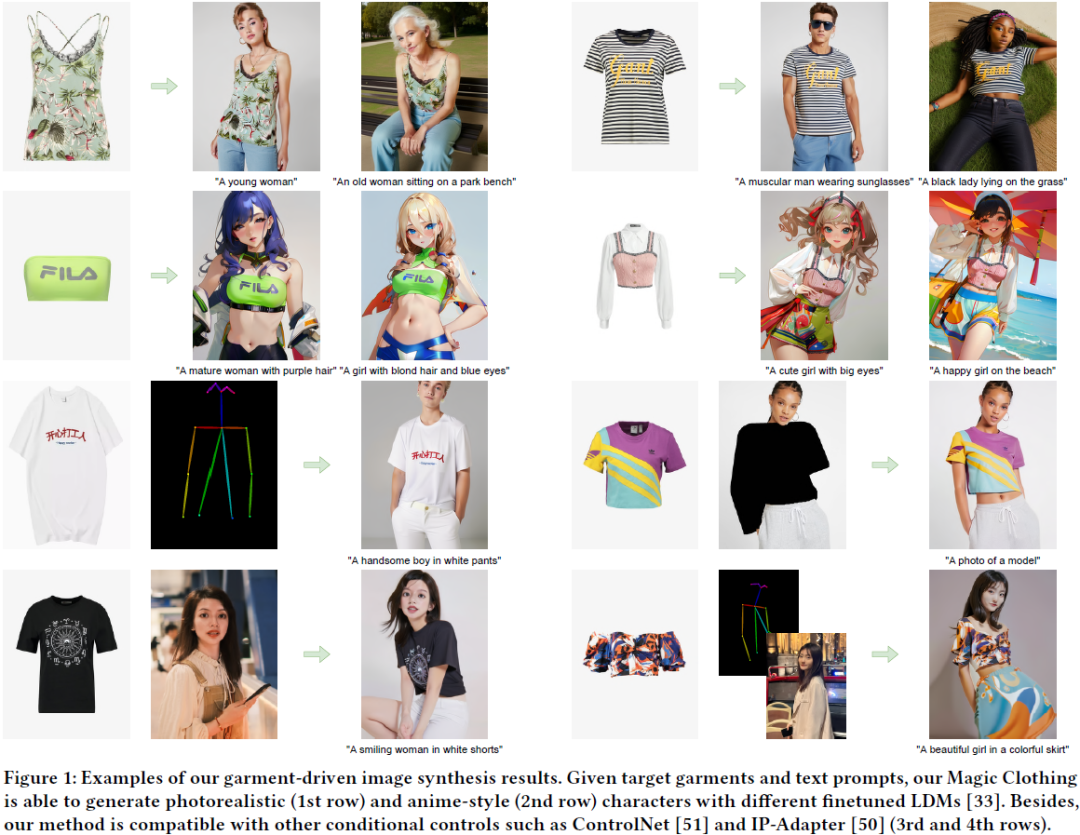
We propose Magic Clothing, a latent diffusion model (LDM)-based network architecture for an unexplored garment-driven image synthesis task. Aiming at generating customized characters wearing the target garments with diverse text prompts, the image controllability is the most critical issue, i.e., to preserve the garment details and maintain faithfulness to the text prompts. To this end, we introduce a garment extractor to capture the detailed garment features, and employ self-attention fusion to incorporate them into the pretrained LDMs, ensuring that the garment details remain unchanged on the target character. Then, we leverage the joint classifier-free guidance to balance the control of garment features and text prompts over the generated results. Meanwhile, the proposed garment extractor is a plug-in module applicable to various finetuned LDMs, and it can be combined with other extensions like ControlNet and IP-Adapter to enhance the diversity and controllability of the g......

